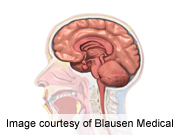
THURSDAY, March 14 (HealthDay News) — Parkinson’s disease has no cure, but three experimental treatments may help patients cope with unpleasant symptoms and related problems, according to new research.
The research findings will be presented at the annual meeting of the American Academy of Neurology in San Diego from March 16 to 23.
“Progress is being made to expand our use of medications, develop new medications and to treat symptoms that either we haven’t been able to treat effectively or we didn’t realize were problems for patients,” said Dr. Robert Hauser, professor of neurology and director of the University of South Florida Parkinson’s Disease and Movement Disorders Center in Tampa.
Parkinson’s disease, a degenerative brain disorder, affects more than 1 million Americans. It destroys nerve cells in the brain that make dopamine, which helps control muscle movement. Patients experience shaking or tremors, slowness of movement, balance problems and a stiffness or rigidity in arms and legs.
In one study, Hauser evaluated the drug droxidopa, which is not yet approved for use in the United States, to help patients who experience a rapid fall in blood pressure when they stand up, which causes light-headedness and dizziness. About one-fifth of Parkinson’s patients have this problem, which is due to a failure of the autonomic nervous system to release enough of the hormone norepinephrine when posture changes.
Hauser studied 225 people with this blood-pressure problem, assigning half to a placebo group and half to take droxidopa for 10 weeks. The drug changes into norepinephrine in the body.
Those on the medicine had a two-fold decline in dizziness and lightheadedness compared to the placebo group. They had fewer falls, too, although it was not a statistically significant decline.
In a second study, Hauser assessed 420 patients who experienced a daily “wearing off” of the Parkinson’s medicine levodopa, during which their symptoms didn’t respond to the drug. He compared those who took different doses of a new drug called tozadenant, which is not yet approved, with those who took a placebo. All still took the levodopa.
At the start of the study, the patients had an average of six hours of “off time” a day when symptoms reappeared. After 12 weeks, those on a 120-milligram or 180-milligram dose of tozadenant had about an hour less of “off time” each day than they had at the start of the study.
Tozadenant, which works on brain receptors thought to regulate motor function, merits further study in future trials, Hauser said.
In another study, Hauser looked at 321 patients with early stage Parkinson’s whose symptoms weren’t handled well by a medicine called a dopamine agonist, typically the first drug prescribed for Parkinson’s patients. During the 18-week study, Hauser assigned them to take either their usual medicine plus an add-on drug called rasagiline (brand name Azilect) or their usual medicine and a placebo.
Azilect is approved for use in patients with early stage disease as a single therapy or as an add-on to levodopa, Hauser said, but not yet as an add-on to dopamine agonists.
Those taking the Azilect — but not those taking the placebo — improved by 2.4 points on a standard Parkinson’s disease rating scale.
Costs of the still unapproved drugs are not known. Azilect costs about $200 monthly at the 1-milligram daily dose used in the study.
Each of the studies was funded by the pharmaceutical company making the particular drug: Chelsea Therapeutics paid for the blood-pressure study; Biotie Therapies Inc., supported the “wearing-off” study; and Teva Pharmaceutical Industries sponsored the Azilect study. Hauser is a consultant for all three companies.
Most impressive of the three studies is the use of droxidopa to prevent dizziness and fainting, said Dr. Michael Okun, national medical director of the National Parkinson Foundation and director of the University of Florida Center for Movement Disorders and Neurorestoration.
Drugs are already available to treat the problem, and compression stockings are also often recommended. Even so, “having another drug in that arena is going to help a lot of people,” he said.
The effects of the other two treatments are more modest, said Okun, who is also a neurology professor. Additional studies will help determine how noteworthy the effects are in real life, he said.
Findings presented at medical meetings should be considered preliminary until published in a peer-reviewed medical journal.
More information
To learn more about Parkinson’s disease, visit the National Parkinson Foundation.

